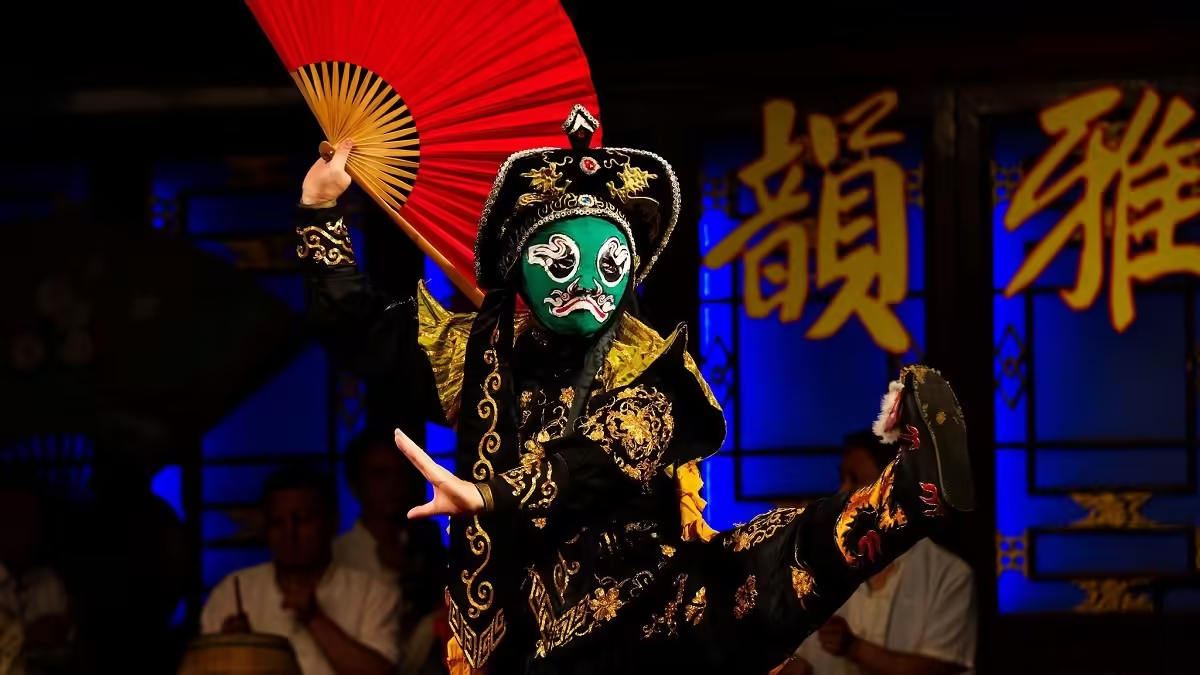Sichuan Opera, the most popular form of traditional theater in the Sichuan-Chongqing region, has a rich history dating back to the Tang Dynasty, when it was said that “Shu opera reigns supreme.” During the Qing Dynasty under Emperor Qianlong, Sichuan Opera evolved from local lantern operas by incorporating vocal styles from various regions, including Su, Gan, Wan, E, Shaanxi, and Gansu. This fusion led to the development of a distinct form of Sichuan Opera sung in the local dialect, featuring five vocal styles: Gaoqiang, Huqin, Kunyue, Lantern Opera, and Pingtan.
One of the most captivating aspects of Sichuan Opera is the art of Face Changing (变脸), an integral part of its performance that has been crafted and passed down through generations of artists. Legend has it that the ancient practice of Face Changing originated as a survival tactic against fierce beasts, where people would paint their faces in different styles to scare off intruders. In Sichuan Opera, this technique is transformed into a stunning performance art.
Classic Performance
One of the most iconic representations of Face Changing can be found in the performance of The Legend of the White Snake at Jinshan Temple, where the character Fahai wields the magical artifact, the purple-golden bowl. Throughout the performance, the bowl is personified as a young boy who appears three times, initially donning a green-blue face. As the narrative unfolds and Fahai battles the white snake, the boy’s face changes dramatically to red with green eyebrows, blue with golden eyebrows, yellow, and finally to a white face with black eyes. This evolution of facial designs creates a striking visual impact.
Techniques of Face Changing
- Face Smearing: The performer applies makeup on specific areas of their face and then quickly wipes it with their hand, instantly transforming into a different character.
- Face Blowing: A box filled with powdered makeup is placed on the stage. The actor performs a dance move, bending down to blow the powder onto their face, which immediately changes its color.
- Face Pulling: Pre-painted masks are attached to silk threads, which are tied to the actor’s waist. During the performance, hidden behind dance movements, the actor pulls off these masks one by one.
Where to Experience
You can witness authentic Face Changing performances in venues such as the Shu Feng Ya Yun and Jinjiang Theater in Chengdu. These shows offer a mesmerizing glimpse into this unique and vibrant cultural art form, showcasing the exquisite skills of Sichuan Opera performers.

